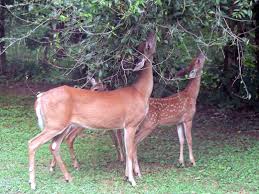记忆方法
记忆“herbivorous”的方法是将其拆分为“herb”和“-vorous”。首先,“herb”指的是草本植物,这为“herbivorous”的第一个部分提供了直观的视觉和意义。其次,“-vorous”是“voracious”的派生词,意为贪婪的、食量大的。结合这两个部分,可以想象一种动物像草本植物一样,吃很多植物,但不捕食其他动物,从而记住“herbivorous”是指食草性的。
以上内容由AI生成, 仅供参考和借鉴
英语词源
- herbivorous (adj.)
- "plant-eating," 1660s, from Modern Latin herbivorus, from Latin herba "a herb" + vorare "devour, swallow" (see voracity).
权威例句
- 1. Cattle are herbivorous animals.
- 牛是吃草的动物.
- 2. Mammoths were herbivorous mammals.
- 猛犸是食草性哺乳动物。
- 3. Herbivorous animals have very small canine teeth, or none.
- 食草动物的犬牙很小或者没有.
- 4. This bacterial decay of cellulose also occurs in the gut of most herbivorous animals.
- 在很多食草动物的肠内这种纤维素也能被细菌分解.
- 5. The ruminats are a group of herbivorous mammals that includes cattle, sheep, goats, camels, and giraffes.
- 反刍动物是一群食草动物,包括牛 、 绵羊 、 山羊 、 骆驼和鹿等.
